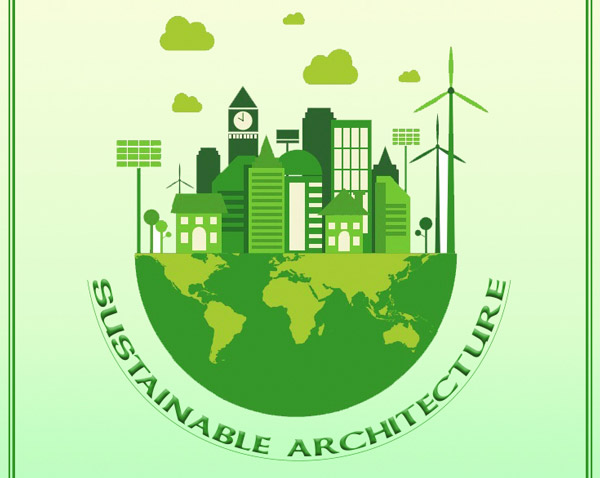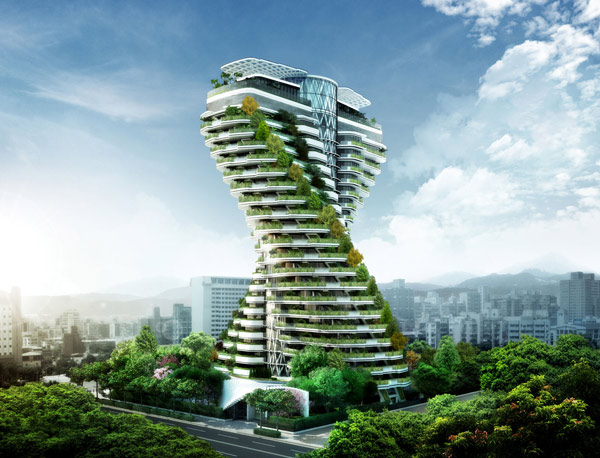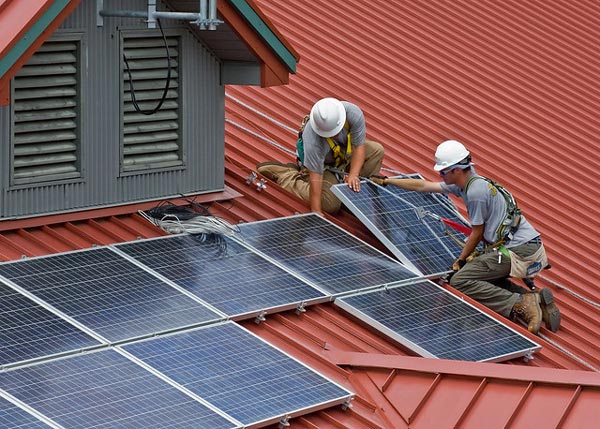
Sustainable architecture is the architecture which helps in reducing the negative environmental impact on buildings. It is done by efficiently using the materials and energy and the ecosystem on a larger scale. It is also known as green architecture. Sustainable architecture is an integral part of sustainable development, which is a significant concern these days. Sustainable development meets the needs and demands of life without compromising the requirements and resources for the people in future generations.

As Gandhi said, “we should not forget that we have not inherited this earth from our forefathers but we have borrowed it from our children.” Sustainability ensures the balance between economic growth, environmental care and social welfare. Sustainable architecture and design improve the overall quality of the environment, clean air, and water, renewing and protecting life – all by designing the connections between the existing conditions. Please remember, environmental pollution is a threat to the global sustainable development due to the toxic emissions, polluting industries, vehicular exhausts, etc., where the construction of a house or manufacturing construction materials play a significant role.According to ‘James Stevens Curl and Susan Wilson’ (Authors of The Oxford Dictionary of Architecture), “Sustainable Architecture is the architecture that does not guzzle energy, requires expensive maintenance, or is the subject to massive heat loss or gain through poor insulation or too much glazing.’
A sustainable design consultant must be engaged from the very beginning of the design process itself. It will help to estimate the sustainability implications of building materials, glazing, orientation, and other physical factors to identify whether a sustainable approach meets the requirements of a specific project or not?
Green homes are designed to be environmentally sustainable. Green buildings and communities integrate the local climate and create healthy interior spaces with natural light and cleverly installed aesthetics.

In the words of Mahatma Gandhi, “There is enough on Earth for everyone’s need, but not enough for even one man’s greed.” The world is reaching its limitation in terms of usage of resources. Hence, the recycling of materials is significant to the development of a sustainable future and all-round well-being of mother earth and its inhabitants
Sustainable design improves the quality of life by eliminating the need for non-renewable energy. When the design solution includes sustainable energy to improve that design’s functioning, the work is done for free. It is a way of understanding and connecting with the site, the environmental conditions and the place.

Why is Sustainable Architecture So Important?
First of all, our homes and buildings have a powerful impact on carbon emissions. The United Nations Environment Programme (UNEP) has recently confirmed that our homes and buildings produce 40% of the greenhouse gas emissions. Therefore, sustainable design strategies are essential to reduce damage to the environment. Any construction of a house in particular requires or consumes a lot of natural resources during construction and uses immense energy throughout its life. Despite the known fact that every human being requires a shelter of his or her own, he or she also requires plethora of natural resources not only to construct the house but also to maintain its various functions. This activity in the long run does take a toll on the environment which is constantly being depleted due to over use or over exploitation of its natural resources.
Secondly, the approach used in this kind of architecture not only reduces waste but also uses sustainable materials, which minimizes the environmental impact. It builds or renovates homes using energy-efficient technology, renewable materials and innovative designs.
Thirdly, sustainable designs last longer and are flexible. These function when they are tethered to non-renewables and also when the non-renewables are not available. These can work well when there is a drought or natural disaster without any input from non-renewable sources of energy. Designs that are created by free sustainable energies don’t require any fossil fuel. Thus, these are capable of providing a good quality of life and encourage sustainable living.
Also, sustainable design is not only limited to new buildings. It can also be applied to the existing buildings by installing solar panels, insulation and low-energy heating systems to transform these into energy efficient buildings.
Also, the recycling of materials, after its use can be done by treating the construction and demolition waste.

Sustainable design is thus an approach to design structures based on natural-systems functioning, conserving natural resources.
What are the Sustainable Building Materials?
Straw, bamboo, recycled plastic, rammed earth, timber, ferrock, blown-in fibreglass insulation, sustainably harvested wool, trass, concrete, sheep wool, panels made from paper flakes, baked earth, clay, flax linen, seagrass, coconut, wood fiber plates, calcium sandstone, locally available stone, rock and Timber Crete are some of the sustainable building materials. Sustainable architecture also includes the use of recycled materials like reclaimed lumber and recycled copper or any recycled metal. It is also essential that whether a particular material can be recycled fully or partially or can be recycled and used or not.
Principles for Designing Sustainability
These days, non-renewable resources like fossil fuel are getting costlier and scarce which leads to less overall net energy production. So, it is essential to initiate designing structures and communities that function well without those resources. As energy costs rise rapidly, fossil fuel, water availability, transportation and food become less affordable, impacting the cost and functioning. Thus, structures that are made from renewable resources should be used. The challenge arises about how to design such structures without the use of non-renewable resources. Three elements should be considered while designing the initial process:
01. Connectivity
Design the relationship between the project, the site, the community, and the ecology. The relationship between the local use and the regional supply of sustainable energy is a critical element in the sustainable design process. Make minimum changes to the natural system functioning.
02. Indigenous
Design with and for what has been sustainable on the site for centuries, i.e. traditional structures.
03. Long Life
The design should be done for the future generations and which reflects the sustainable architecture and designs adopted by the past generations. Renovating and reusing the existing infrastructure is one of the most effective sustainable design approaches.
Sustainable Design and Existing Buildings
The challenges towards sustainability include the existing buildings, communities, towns and regions. The built structures in the world need an aid to make them sustainable by making design renovation and hence they could be energy efficient. On any existing structure, the sustainable design principles can be introduced by:
- Introducing the natural ventilation and day lighting
- Eliminating the consumption of non-renewables
- Providing a healthier environment for users
- Redesigning the existing structure
Examples of Sustainable Architecture
01. The Natural Resources Defense Council Headquarters (NRDC)

The Natural Resources Defense Council Headquarters (NRDC) is completed in 1988 by Croxton Collaborative Architects, stands today as the seminal project that turned the tide towards green architecture in America by addressing the full ecology of the building: light, air, energy, and human health and all-round well-being.
02. Bullitt Center, Washington

Bullitt Center was the first of its kind to receive Living Building Certification from International Living Future Institute’s Living Building Challenge. It has 575 solar panels, which generate 60% of the energy requirement of the building, 56,000-gallon cistern for rainwater collection which is treated and supplied as the building’s water needs. The building construction also uses wood from sustainably harvested forests.
Summing up, Sustainable architecture is an integral part of sustainable development, which is a significant concern these days. It helps in reducing the negative environmental impact on buildings. As said by “Parisa Zraati” (Author of Sustainable architecture), “Green Architecture” is an umbrella term which is a combination of values of sustainability and ecological architecture that encompass social and political and environmental aspects.’
Also Read:
Types of Ventilation for Your House
Functional Requirements of a Ventilation System in House
3 Major Components of Daylight Factor
Image Courtesy: Image 1, Image 2, Image 3 – corlettedesign, Image 5, Image 6































